The 1946 Wheat penny holds a moderate value due to its high mintage, making it relatively common in today’s market. However, these charming coins—being the first post-war American cents—remain desirable to collectors as part of the historic Wheat Penny series.
An interesting detail about the 1946 cents is that they belong to the group known as “shell case cents,” minted from 1944 to 1946. These were made using recycled ammunition shell casings from WWII, adding historical value and making them a fascinating part of American numismatic history.
1946 Wheat Penny Value Chart
| Condition | 1946 No Mint Mark Penny | 1946 D Penny | 1946 S Penny | 1946 S Penny (S Over D) |
|---|---|---|---|---|
| Good | — | — | — | $12 |
| Very Good | — | — | — | $18 |
| Fine | $0.06 | $0.06 | $0.12 | $29 |
| Very Fine | $0.12 | $0.12 | $0.18 | $41 |
| Extra Fine | $0.23 | $0.23 | $0.23 | $89 |
| About Unc. | $0.41 | $0.41 | $0.41 | $149 |
| MS 60 | $0.71 | $0.71 | $0.71 | $272 |
| MS 63 | $2.41 | $2.41 | $2.41 | $481 |
History of the 1946 Wheat Penny
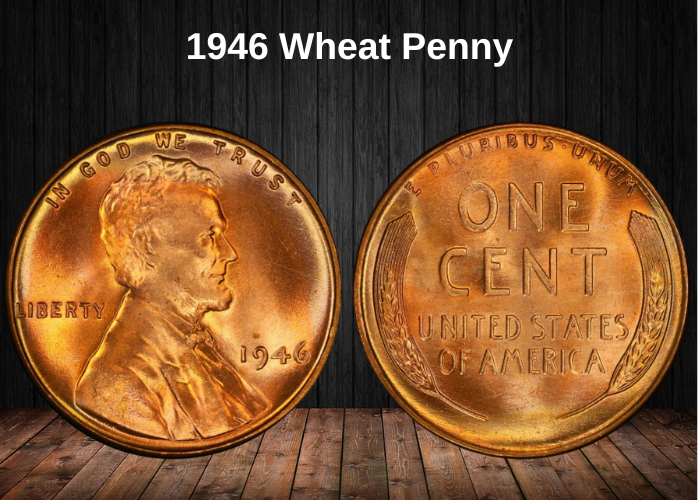
One cent (1¢) is the lowest-denomination coin in U.S. currency, following the discontinuation of the half-cent in 1857. Although its official name is the “cent,” most Americans refer to it as a “penny,” a term borrowed from the British coin of the same name.
The first U.S. cents were issued in 1793. These were large coins known as Large Cents, produced in seven different designs until 1857. Their size was comparable to today’s U.S. dollar coins, with diameters ranging from 27 to 29 mm (1.06299 to 1.14173 inches).
Starting in 1856, all U.S. cents have been classified as small cents, with a consistent diameter of 19.05 mm (0.75 inches). After the short-lived Flying Eagle cent (minted for only two years), the U.S. Mint moved on to produce Indian Head cents until 1909, when the Lincoln Wheat penny debuted.
1946 Wheat Penny Types and Mintage
| Location | Type | Mintage |
|---|---|---|
| Philadelphia | 1946 (No Mint Mark) | 991,655,000 |
| San Francisco | 1946 S | 198,100,000 |
| Denver | 1946 D | 315,690,000 |
| Total | — | 1,505,445,000 |
The Wheat Penny series began in 1909 to honor Abraham Lincoln on his 100th birthday. These coins remained in production until 1959, when the Lincoln Memorial reverse replaced the wheat design.
In 2009, four special Lincoln Bicentennial reverse designs were issued to celebrate Lincoln’s 200th birthday. Beginning in 2010, the U.S. Mint introduced the current Lincoln Union Shield reverse, which is still used today.
Notably, while the reverse of the penny has evolved over time, Lincoln’s bust on the obverse has remained consistent since its introduction.
Features of the 1946 Lincoln Wheat Penny
The obverse of the 1946 Lincoln Wheat penny
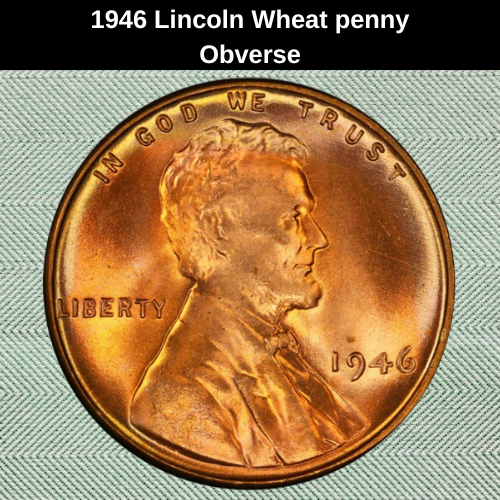
Unlike the reverse design, which has changed every 50 years to mark Lincoln’s birthday anniversaries, the obverse has remained unchanged since its introduction. At the center of this plain-edged coin, you’ll find President Abraham Lincoln facing right.
The obverse features standard inscriptions that hold deep symbolic meaning for Americans and are also required by law. These include:
- “IN GOD WE TRUST” at the top
- “LIBERTY” behind Lincoln’s neck
- The year “1946” in front of his chest
The designer’s initials, “VDB” (Victor David Brenner), are subtly placed beneath Lincoln’s shoulder. Most 1946 pennies have a blank area beneath the date, but coins minted in Denver and San Francisco include a mint mark in that spot:
- The letter “D” indicates a coin minted in Denver
- The letter “S” represents the San Francisco Mint
The reverse of the 1946 Lincoln Wheat penny
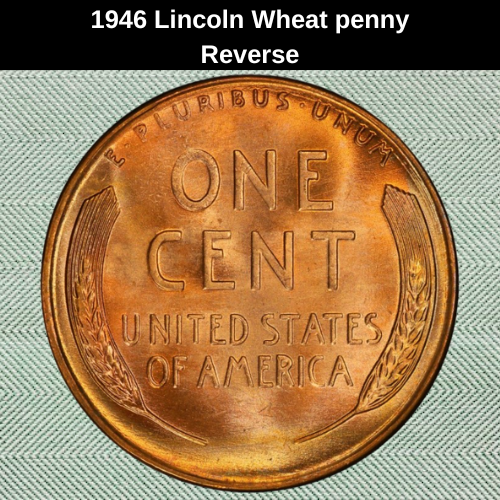
Like all pennies minted between 1909 and 1958, the 1946 Wheat Penny features two wheat stalks running along the left and right edges of the reverse side—hence the nickname “Wheat Penny.”
Unlike the obverse, which has remained largely unchanged since its debut, this reverse design was used for only fifty years. At the top, you’ll find the Latin motto E · PLURIBUS · UNUM, while the center of the coin displays four bold lines of text nestled between the wheat ears:
- ONE
- CENT
- UNITED STATES
- OF AMERICA
These inscriptions were struck in varying font sizes to enhance readability and design balance.
1946 Wheat Penny Specifications:
- Face Value: One cent ($0.01)
- Shape: Round
- Composition: 95% copper with zinc or tin
- Thickness: 1 mm (0.03937 inches)
- Diameter: 19.05 mm (1.75 inches)
- Weight: 3.11 g (0.10970 ounces)
- Edge: Plain
Other Features of the 1946 Lincoln Wheat Penny
Apart from the half-cents issued between 1793 and 1857, the penny is the lowest denomination in U.S. coinage. The 1946 Lincoln Wheat penny is made of 95% copper and weighs 3.11 grams (0.10970 ounces). It has a diameter of 19.05 mm (1.75 inches) and a thickness of exactly 1 mm (0.03937 inches), making it a small yet historically significant coin.
1946 Lincoln Wheat Penny Grading
Since the 1946 Wheat cents were minted nearly 80 years ago, their condition can vary widely. The grading system categorizes coins into circulated and uncirculated types. Circulated coins are typically not considered collectible, while uncirculated coins, denoted by the grade MS (Mint State), are valuable. The higher the grade, the more valuable the coin.
Grading Scale:
- 1: Basal State-1
- 2: Fair
- 3: Very Fair
- 4, 5, 6: Good
- 7, 8, 10: Very Good
- 12, 15: Fine
- 20, 30: Very Fine
- 40: Extremely Fine
- 50: About Uncirculated
- 60: Mint State
- 65: Mint State
- 70: Mint State
To determine the exact value of your coin, refer to a grading guide. The grade of your coin is essential for understanding its true worth.
1946 Lincoln Wheat Penny Value Guides
In 1946, the US Mint produced a substantial number of Lincoln Wheat pennies, with a total mintage of 1,505,445,000 coins across three mints. It’s important to note that no proof coins were minted that year, as proof production had been discontinued after 1942. The first proof coins intended for collectors would not reappear until 1950.
1946 No Mint Mark Wheat penny Value
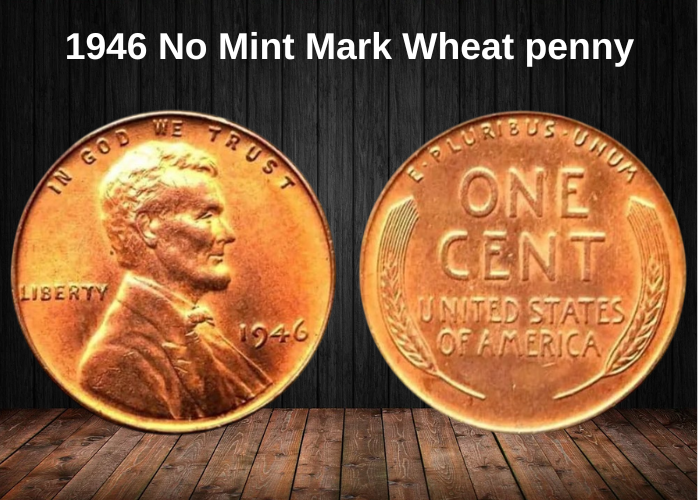
In 1946, the Philadelphia Mint released a significant number of 991,655,000 No Mint mark pennies into circulation, making it the highest mintage of the year. These coins come in three varieties based on their color:
- Red pennies are the most prized. While most of them range in price from $0.55 to $85 in lower mint state grades, the highest-quality specimens can be valued between $515 and $600. An exceptional example sold for $14,950 in 2006.
- Red-brown pennies are generally more affordable, with prices ranging from $0.35 to $55. However, a 1946 red-brown penny in MS 64 grade reached $135 on eBay in 2019.
- Brown pennies are the least valuable, with most costing between $0.25 and $45. However, rare high-grade pieces, such as a 1946 MS 67 Lincoln cent, have been known to fetch $736.
These price ranges vary based on coin condition and demand, making well-preserved specimens particularly valuable for collectors.
1946 D Wheat penny Value
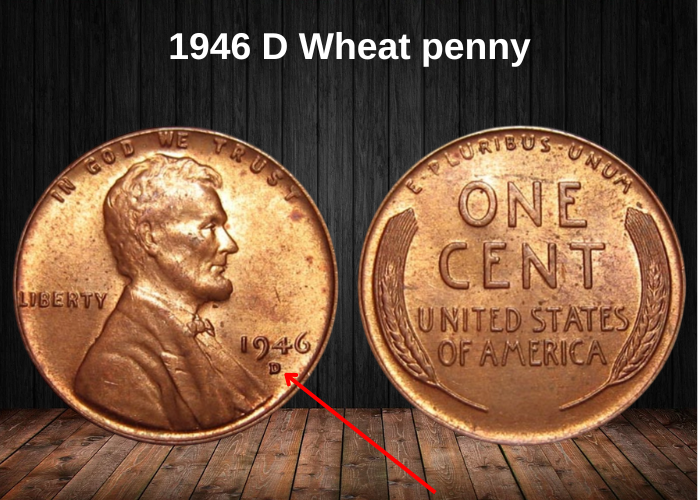
In 1946, the Denver Mint produced 315,690,000 Lincoln Wheat pennies, and many of these are still available in the mint state. The value of these coins depends on their condition and color, and here’s how it breaks down:
- Brown pennies are the least collectible, with most priced between $0.55 and $45. However, rare specimens can be worth more. For example, the 1946 D AU 50 brown cent, despite its low grade and unappealing toning, sold for $470, setting an auction record for this type.
- Red-brown pennies are more desirable and typically cost between $0.65 and $55. However, in some cases, a rare coin can fetch a higher price. For instance, a 1946 D MS 67 red-brown cent sold for $145 in 2021.
- Red-toned pennies are the most collectible and valuable. Expect to pay anywhere from $0.85 to $162 for these coins, depending on their condition. The most expensive 1946 D red cent, graded MS 67+, was sold for $2,585 in 2014, setting a remarkable price for a penny from this series.
Collectors pay close attention to the color and grade, and these factors significantly affect the value of the coins.
1946 S Wheat penny Value
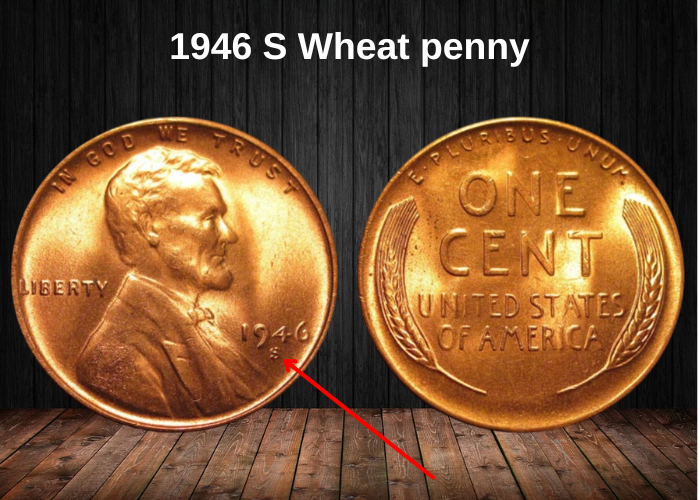
In 1946, the San Francisco Mint produced the smallest number of pennies, with 198,100,000 struck. Despite this lower mintage, these coins are still relatively affordable. Here’s a breakdown of their pricing:
- Brown pennies are the least valuable, with most available for $0.55 to $47. The highest-selling example in this category was a 1946 S penny in MS 67 grade, which reached a record price of $135 at auction.
- Red-brown pennies are more sought after by collectors. The price range for these starts at $0.65 for those in MS 63 grade. More well-preserved specimens are valued between $1 and $57. The most expensive 1946 S RB penny sold for $204.
- Red-toned pennies are the most collectible and can command higher prices. The typical price range for these is $0.85 to $174, but there was a significant outlier: the 1946 S MS 67+ red penny fetched an astounding $16,800 at auction in 2022, making it the highest-priced penny in this set.
Collectors value the red and red-brown varieties much more, and higher-grade specimens can fetch impressive amounts at auctions.
Rare 1946 Lincoln Wheat Penny Error List
S over D
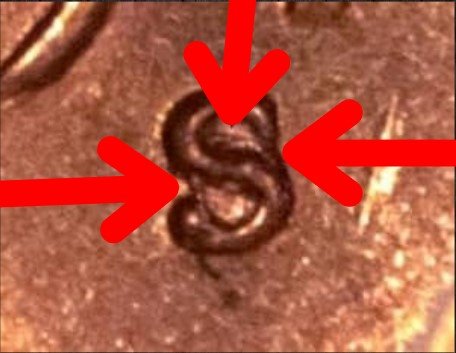
One of the most notable errors among 1946 pennies is the S mint mark struck over the D, creating the S/D mint mark variety. These coins are highly sought after by collectors due to their rarity. Here’s a breakdown of their value:
- Low-grade collectible S/D pennies typically range from $11 to $144.
- Mint state specimens are more valuable, with prices ranging from $260 to $465.
- The most expensive coin in this variety is the 1946 S/D MS 67 brown penny, which sold for $3,181 on eBay.
This error coin is a favorite among numismatists, and its value increases significantly as its grade improves. The rarity of the S/D mint mark makes it a prized piece for collectors.
Inverted mint mark

Another 1946 penny error involves the inverted letter S on the mint mark, which occurred due to the hand-struck process. These coins, minted in San Francisco, are highly valued by collectors due to the rarity of the minting error.
The auction prices for these inverted S mint mark pennies generally range from $179 to $468, depending on their condition and rarity. These coins are considered a unique find and are highly sought after by numismatists who specialize in errors.
L on Rim
Pennies from 1946 featuring the letter L engraved on the coin’s rim are relatively common. This issue occurs when the word LIBERTY is slightly misaligned, causing the L to appear on the rim. These coins are often a bit more valuable than regular ones, though they remain relatively affordable and are of interest to collectors who specialize in minting errors.
Doubled Die
A doubled die minting error happens when a coin planchet is struck two or more times, causing a doubling effect on the design. This error can appear on either the obverse or reverse of the coin, or both. While this is a well-known error in coins like the 1946 penny, it generally doesn’t carry a high price tag. The coins with this error are relatively inexpensive, as the doubling might be subtle, especially on worn coins. However, they are still collectible for those interested in minting imperfections.
Clipped planchet
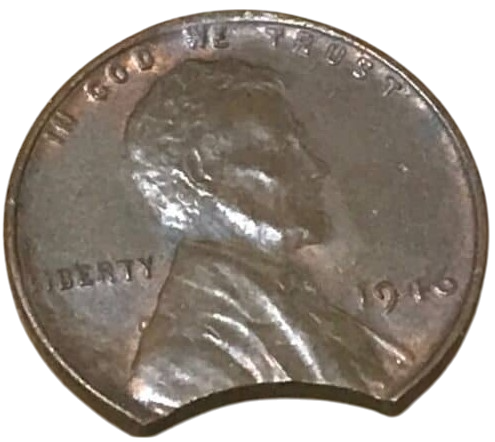
Clipped planchet pennies are a type of collectible minting error where a portion of the coin is missing along its edge, typically due to the metal planchet being improperly cut or struck. These coins are easily recognizable because of the missing edge and can be highly collectible, depending on the size and location of the clip. While they may not be extremely rare, they are sought after by collectors who appreciate the unique imperfections found in coin minting.
Where to sell your penny?
Now that you know the value of your penny, you might be wondering where to sell it. Don’t worry: here’s a guide to some of the best online platforms where you can easily sell your coins, along with their advantages and disadvantages.
Discover the best platforms for selling coins online (pros and cons).
FAQ about the 1946 Lincoln Wheat Penny
1. Why is the 1946 Lincoln Wheat Penny historically significant?
The 1946 Lincoln Wheat Penny holds historical significance because it marks the final year of the Wheat Reverse design. After 1946, the U.S. Mint transitioned to the Lincoln Memorial design, which debuted in 1959. Thus, the 1946 penny serves as a bridge between the classic Wheat design (used since 1909) and the newer Lincoln Memorial reverse, making it a noteworthy coin in U.S. numismatics.
2. What is the metal composition of the 1946 Lincoln Wheat Penny?
The 1946 Lincoln Wheat Penny is made from:
- 95% copper
- 5% zinc
This composition is consistent with the pennies minted before and during World War II, after which the U.S. Mint briefly switched to steel pennies in 1943 due to the war effort. By 1946, the copper alloy was again in use for regular coin production.
3. How many 1946 Lincoln Wheat Pennies were minted?
The 1946 Lincoln Wheat Penny was minted in large numbers to meet the demand for everyday circulation:
- Philadelphia (no mintmark): 1,435,400,000+
- Denver (D): 608,019,000+
- San Francisco (S): 282,760,000+
With over 2.3 billion coins minted, the 1946 penny is considered one of the most common in the Wheat series. As a result, most examples are available at a low price point in circulated conditions.
4. What is the value of a 1946 Lincoln Wheat Penny today?
The value of the 1946 Lincoln Wheat Penny varies depending on its condition:
- Circulated condition: Typically worth around $0.05 to $0.25.
- Uncirculated condition: Coins in MS-63 or MS-64 can be valued between $1 and $10.
- High-grade coins (MS-65 or above) may sell for $15–$25 or more, depending on the quality and luster.
While the 1946 penny is common and generally inexpensive, collectors who find high-quality specimens or error varieties could see a premium on their coins.
5. Are there any rare errors or varieties of the 1946 Lincoln Wheat Penny?
The 1946 Lincoln Wheat Penny, like many coins, has some error varieties that make certain coins more valuable:
- Double Die Obverse (DDO): Some 1946 pennies have a doubled image, especially in the “LIBERTY” and “IN GOD WE TRUST” areas.
- Off-center Strikes: These errors occur when the coin is not aligned properly during the striking process, resulting in a coin with parts of the design missing.
- Die Cracks: Visible cracks on the coin’s die can result in interesting varieties, such as “cud” errors or “rim cuds” (where metal fills in cracks on the coin’s edge).
If you come across one of these errors in good condition, it could command a premium above the typical value for a 1946 Wheat Penny.
6. How does the 1946 Lincoln Wheat Penny compare to the 1947 and 1948 pennies?
The 1946 Lincoln Wheat Penny is the first penny after the end of World War II and marks the last year of the Wheat design. Here’s how it compares to the next two years:
- 1947: The 1947 penny continued with the Wheat design, but it began to show slightly more wear as it was circulated in the post-war economy.
- 1948: The 1948 penny was the first to show signs of the transition to the Lincoln Memorial design, which began to be implemented in 1959. After 1948, the Wheat design was phased out in favor of the Memorial design, making the 1946 penny historically significant as one of the last coins of its kind.
7. How can I identify a high-grade 1946 Lincoln Wheat Penny?
To identify a high-grade 1946 Lincoln Wheat Penny, look for the following characteristics:
- Sharp details: The image of Lincoln, the wheat stalks, and the lettering should be clearly defined with minimal wear.
- Smooth surfaces: The coin should be free from scratches, tarnishing, or heavy bag marks.
- Luster: A high-grade uncirculated coin will have a bright, reflective surface, showing no signs of circulation. Coins that are MS-65 or higher will have a noticeable shine and good eye appeal.



















































